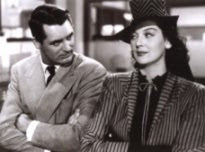A self-styled amateur Nazi - who resembles an engorged variation on the evil spawn in "Village of the Damned" - has assumed complete control of not only our homeland but also television, which was once a dependable, immediate source of surcease and escape from just such ugly situations. But no more.
And while there are reportedly about 190 available cable and satellite TV channels, he seems to be on every one of them. And. All. The. Time.
The first word that one hears when one tunes in is his name.
The first image one sees is his face.
The first voice that one hears is his.
And each week seems to force us to witness a grotesque car wreck. Last week's episode involved a beheading. This week's was devoted to a multiple assassination attempt via bombs. And just now, a bonus episode about a critical shooting at a Pittsburgh synagogue has been added.
And nestled in-between all this awfulness, effectively exacerbating matters, are commercials about drugs for life-threatening medical problems - drugs that are also possibly life-threatening themselves.
Can it get any worse? Is there an answer - a way out of all of this?
Well, one can run and run and run, like little Jimmy Grimaldi, the frightened kid in the old "Invasion of the Body Snatchers" movie.
Run. Or else, you're next. That's right, you're next! Or you can try not watching TV. And stop checking the internet. And avoid social media.
Or, you can simply ... run.
Regarding Comments: All comments are enthusiastically appreciated but are moderated before publication. Replies signed "unknown" or "anonymous" are not encouraged. Please sign any response with a name (real or fabricated) or initials. Be advised that a "name" will be assigned to any accepted post signed "unknown" or "anonymous." Thank you.
~images~
(from top)
~Peter Finch in Arthur Hiller's "Network"
~photography: United Artists 1976©
~Martin Stephens and his deplorables in Wolf Rilla's "Village of the Damned"
~photography: MGM 1960©
~Kevin McCarthy in Don Siegel's "Invasion of the Body Snatchers"
~photography: Allied Artists 1956©
~Peter Finch in Arthur Hiller's "Network"
~photography: United Artists 1976©
~Martin Stephens and his deplorables in Wolf Rilla's "Village of the Damned"
~photography: MGM 1960©
~Kevin McCarthy in Don Siegel's "Invasion of the Body Snatchers"
~photography: Allied Artists 1956©

























